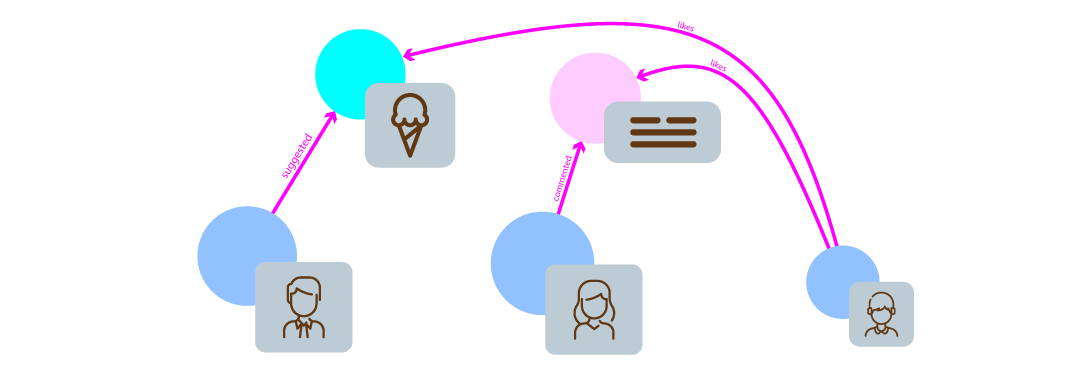Graphs and Natural Data Modeling
Graphs provide an alternative to tabular data structures, allowing for a more natural way to store and retrieve data.
For example, you could imagine that we are modeling a conversation within a family:
- A
father, who starts a conversation about going to get ice cream. - A
mother, who comments that she would also like ice cream. - A
child, who likes the idea of the family going to get ice cream.
This conversation could easily occur in the context of a modern social media or messaging app, so you can imagine the data model for such an app as follows:

For the remainder of this module, we will use this as our example application:
a basic social media or messaging app, with a data model that includes
people, posts, comments, and reactions.
A graph data model is different from a relational model. A graph focuses on the relationships between information, whereas a relational model focuses on storing similar information in a list. The graph model received its name because it resembles a graph when illustrated.
- Data objects are called nodes and are illustrated with a circle.
- Properties of nodes are called predicates and are illustrated as a panel on the node.
- Relationships between nodes are called edges and are illustrated as
connecting lines. Edges are named to describe the relationship between two
nodes. A
reactionis an example of an edge, in which a person reacts to a post.
Some illustrations omit the predicates panel and show only the nodes and edges.
Referring back to the example app, the father, mother, child, post, and comment
are nodes. The name of the people, the post’s title, and text of the comment
are the predicates. The natural relationships between the authors of the posts,
authors of the comments, and the comments' topics are edges.
As you can see, a graph models data in a natural way that shows the relationships (edges) between the entities (nodes) that contain predicates.